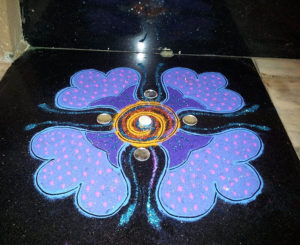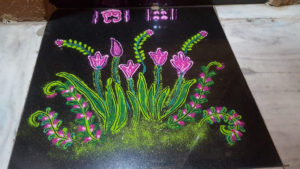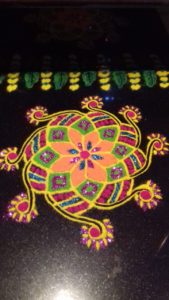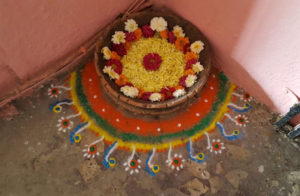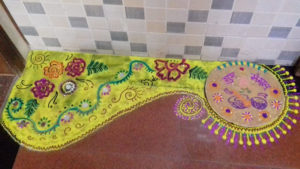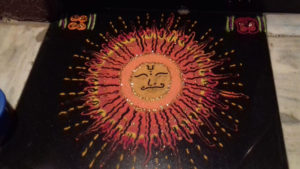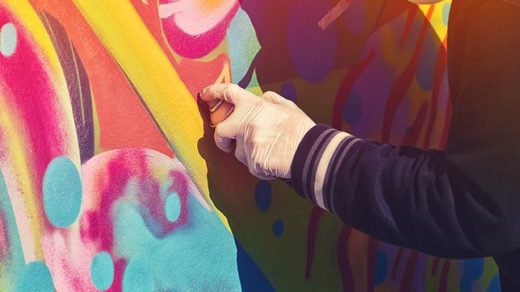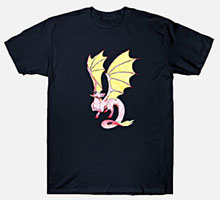Rangoli is an ancient art form from the Indian sub-continent. The word Rangoli comes from Sanskrit word “Rangavalli” meaning a design/pattern of colors. It is created on the ground or floor at the entrance of homes, businesses or even temples. In ancient times it was a daily ritual to create Rangoli at the start of the day, but with modernization it has become a ritual only for auspicious occasions such as Hindu festivals, marriages, religious ceremonies, and so on.

Some commonly used materials:
Rangoli can be drawn using natural ingredients such as dry rice flour to create borders for the design and turmeric, vermilion and any other natural colors can be used to fill in the design. Although, I grew up using chemical varieties of sand like coarse powder which was available to buy at most stores in India. This sand would come in all possible colors or you could mix different colors to make your own.
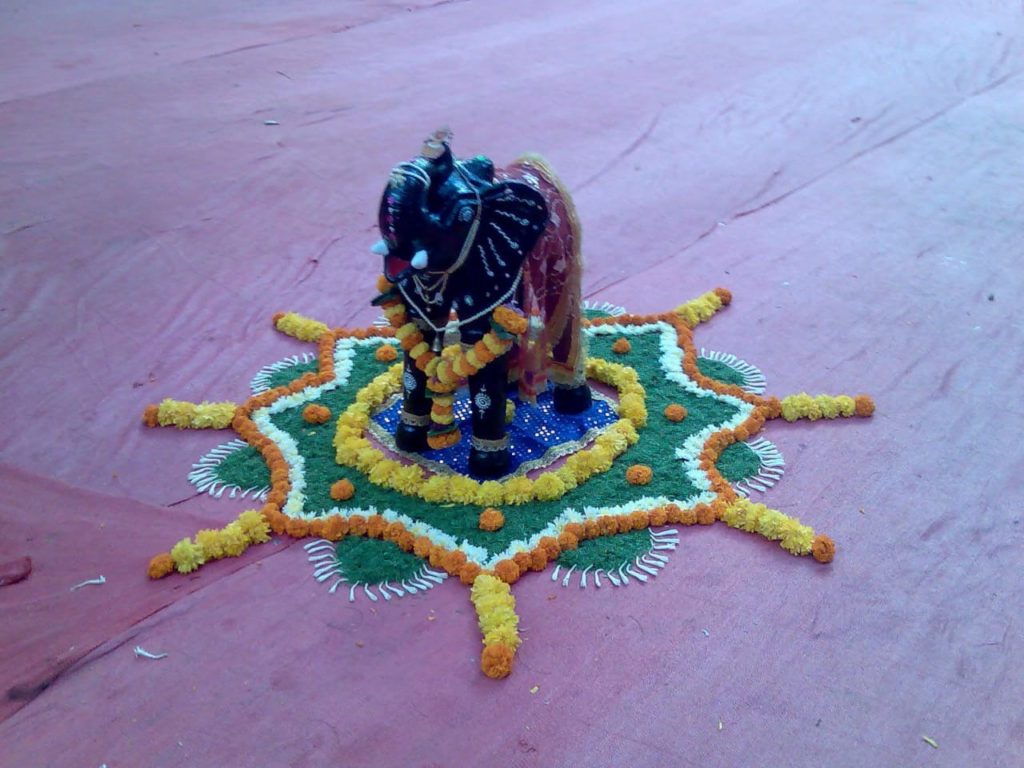
Some Rangoli designs can include flower petals and leaves to enhance the outcome and some designs would be created completely from them.
Rangoli patterns can be and often are geometric. Geometric designs can be started by first placing equidistant dots, evenly spaced across your chosen surface – in the form of a grid, as shown here: 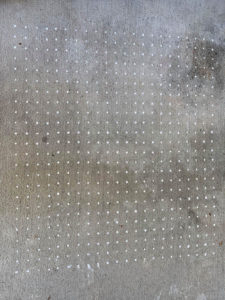 (white chalk is often used for this step)
(white chalk is often used for this step)
… and then connecting them to create patterns using white powder – like this for example:

Or this slightly more simple design:
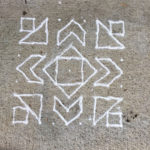
The designs can be completed by filling in the pattern with colored powder:

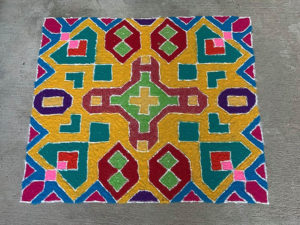
You may also enhance your design with candle decorations, which we do during Diwali (festival of lights).
Other popular patterns include floral designs, motifs, peacocks, etc.

Some skilled artists even draw patterns to showcase a holiday or other special occasion – like this Santa Claus in his sleigh:

Although traditional Rangoli is drawn by hand, now there are dispenser tools and stencils available to make the job easier.
Most of the pictures featured in this article are creations of my sister in law, Swati Muley, who is based out of Mumbai India. She is one of the most creative persons in my extended family and is very warm and loving too. Most of my creativity of Rangoli is an inspiration from her. When I was still back in India we would celebrate all festivals together and I would love watching her bring her creativity to life. Now that we are on opposite sides of the globe, thanks to technology that even now we are able to virtually celebrate festivals together.
Here are a few more of Swati’s beautiful creations:
To learn about another ancient art form from India, check out this article on designing with Henna.
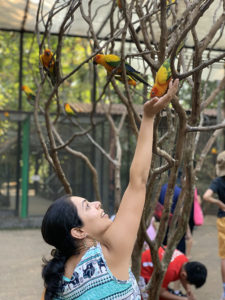 Hi readers, I am Anushree Neurgaonkar or Anu as my family, friends and colleagues call me. I am a working mom of two girls named Zoie and Nora, and live in Foster City, CA with my family.
Hi readers, I am Anushree Neurgaonkar or Anu as my family, friends and colleagues call me. I am a working mom of two girls named Zoie and Nora, and live in Foster City, CA with my family.
I was born in Mumbai India and lived there half of my life and have been living in the Bay Area for the rest. I like to look at life as the most precious gift and wish to enjoy every bit of it. My creative side and my girls help me achieve the balance to carry on the hectic Bay Area life while pausing and smelling the roses on the way. I am a big travel enthusiast and love to try out different adventure sports.
Thank you to Anu for this article! I met Anu several years ago, when we were both working for a major corporation here in Connecticut. Anu is a beautiful person, inside and out!
– Angie

